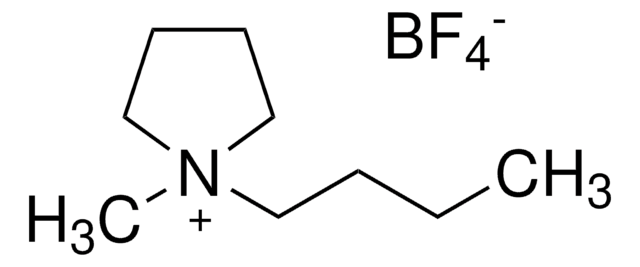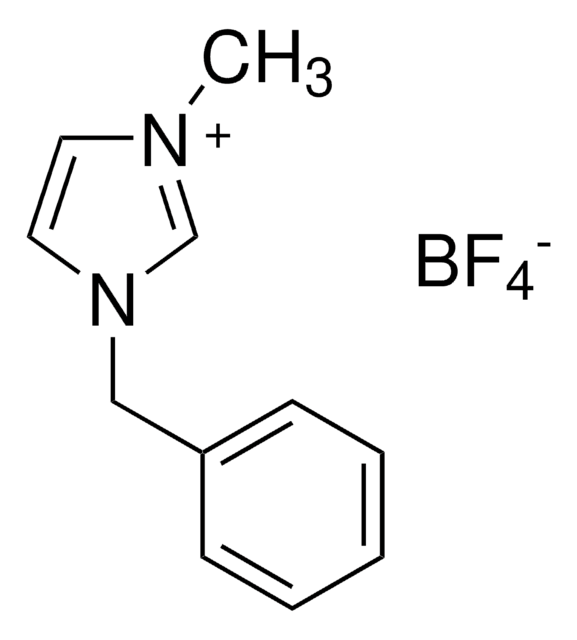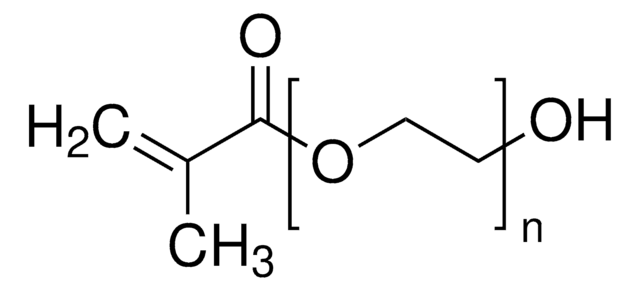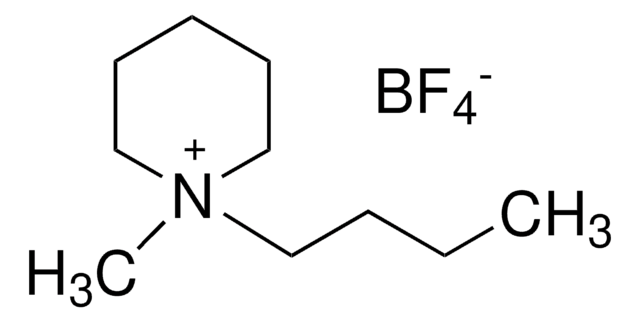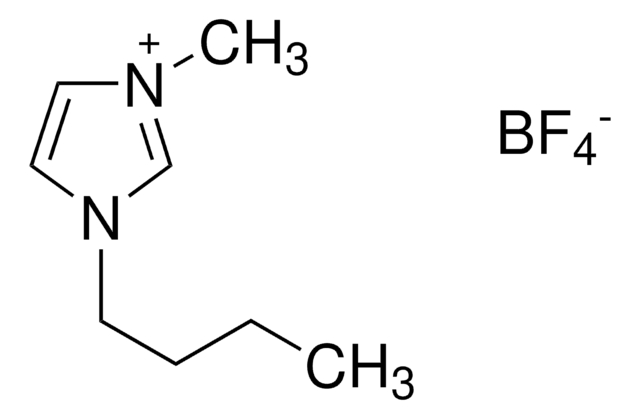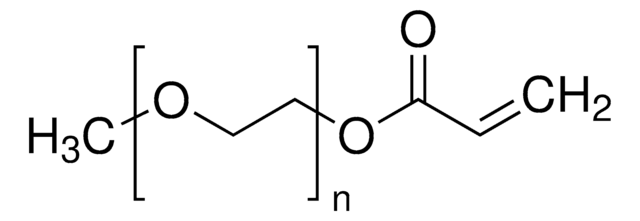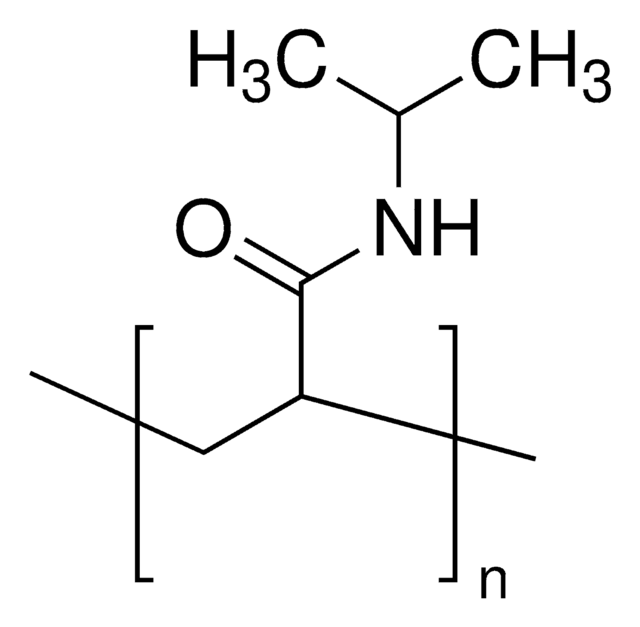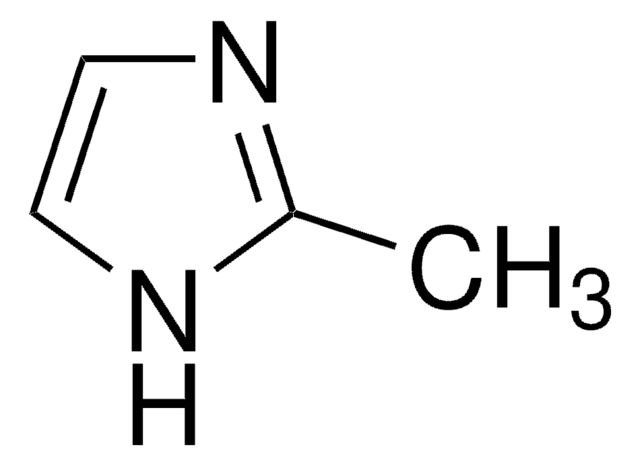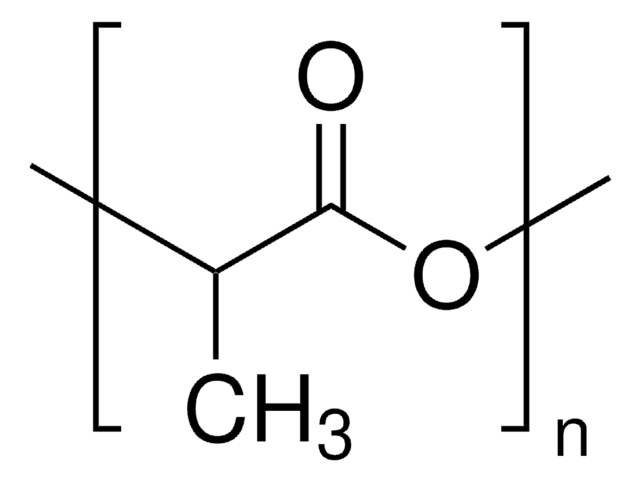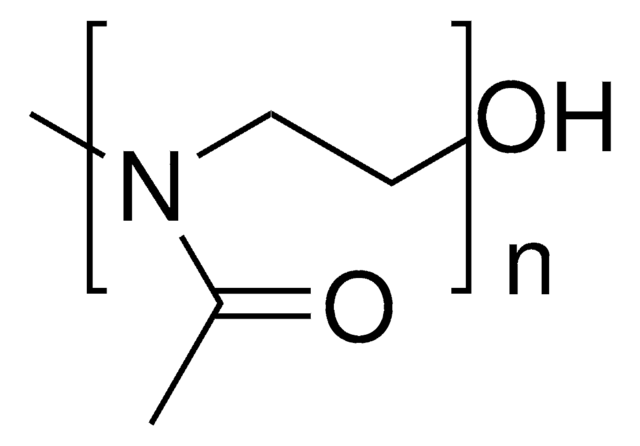900809
1-Butyl-1-methylpyrrolidinium tetrafluoroborate
98%, H2O <500 ppm
Synonym(s):
N-n-Butyl-N-methylpyrrolidinium tetrafluoroborate, Butylmethylpyrrolidinium tetrafluoroborate
About This Item
Recommended Products
grade
battery grade
Assay
98%
form
powder
composition
H2O, <500 ppm
impurities
≤500 ppm H2O
mp
150 °C
application(s)
battery manufacturing
SMILES string
F[B-](F)(F)F.CCCC[N+]1(C)CCCC1
InChI
1S/C9H20N.BF4/c1-3-4-7-10(2)8-5-6-9-10;2-1(3,4)5/h3-9H2,1-2H3;/q+1;-1
InChI key
PGCVCJOPLBWQHU-UHFFFAOYSA-N
Looking for similar products? Visit Product Comparison Guide
Application
Signal Word
Warning
Hazard Statements
Precautionary Statements
Hazard Classifications
Eye Irrit. 2 - Skin Irrit. 2 - STOT SE 3
Target Organs
Respiratory system
Storage Class Code
11 - Combustible Solids
WGK
WGK 3
Flash Point(F)
Not applicable
Flash Point(C)
Not applicable
Choose from one of the most recent versions:
Certificates of Analysis (COA)
It looks like we've run into a problem, but you can still download Certificates of Analysis from our Documents section.
If you need assistance, please contact Customer Support.
Already Own This Product?
Find documentation for the products that you have recently purchased in the Document Library.
Our team of scientists has experience in all areas of research including Life Science, Material Science, Chemical Synthesis, Chromatography, Analytical and many others.
Contact Technical Service